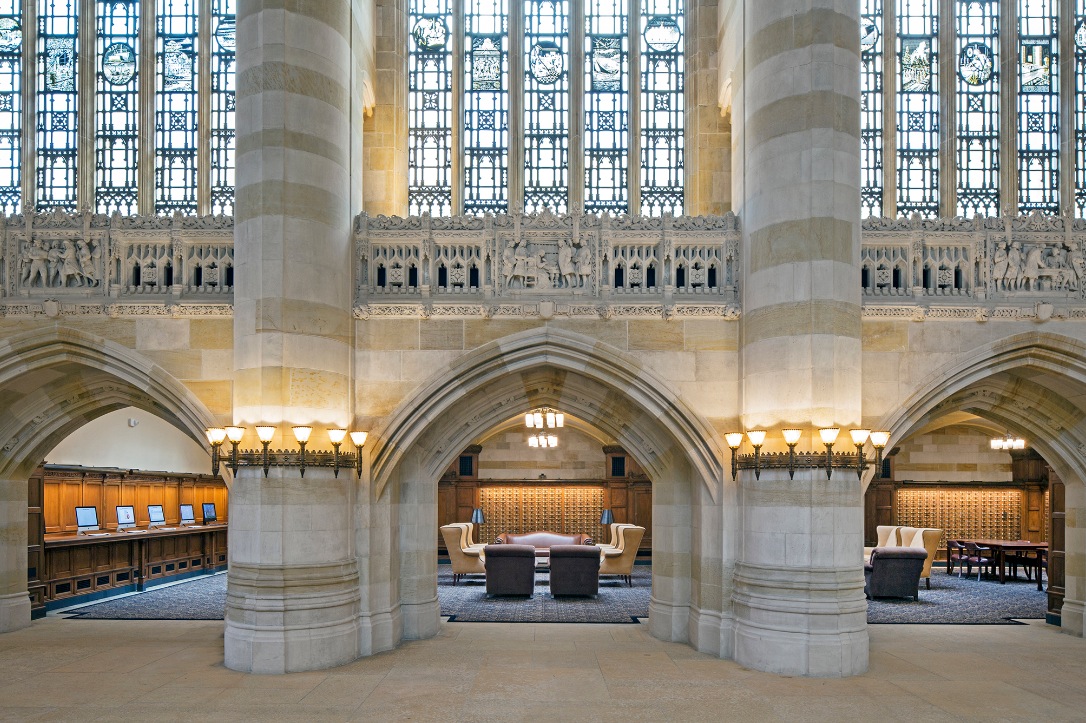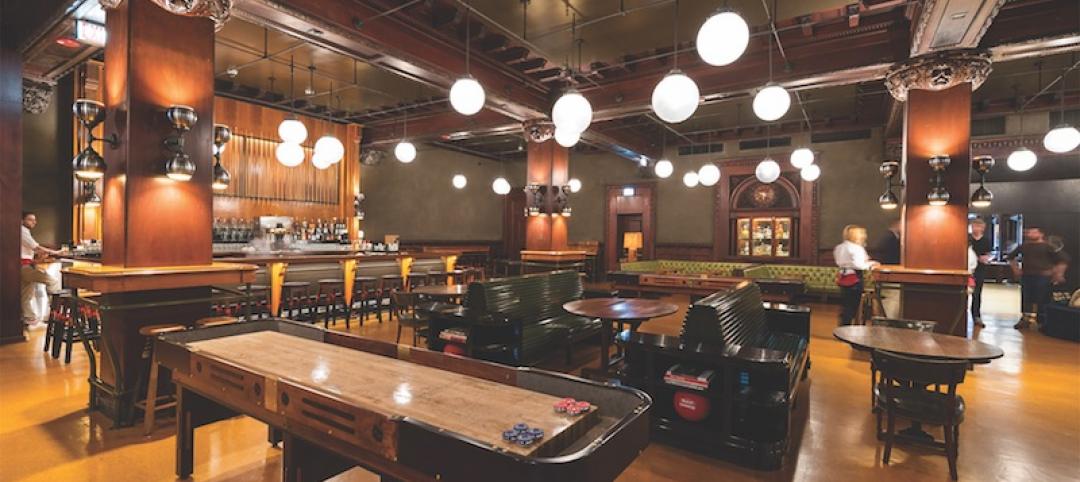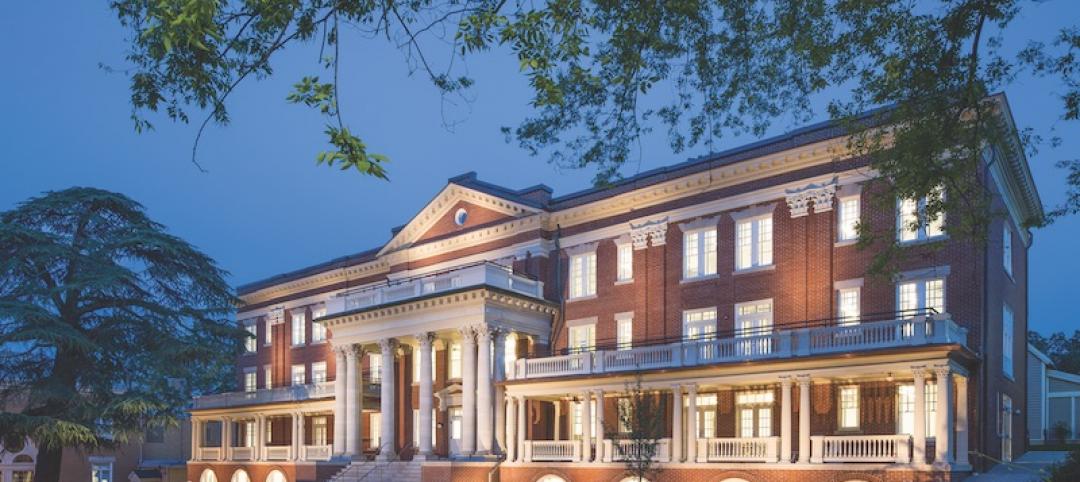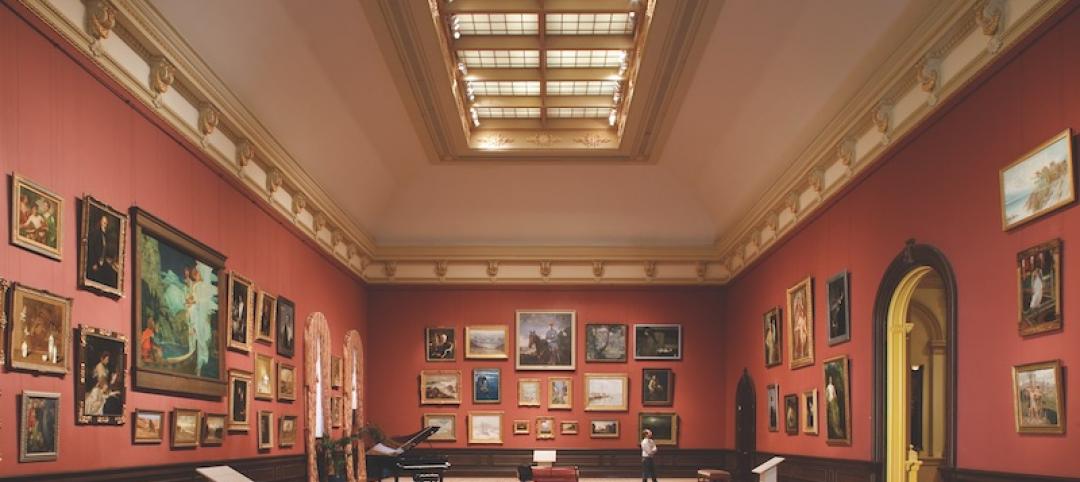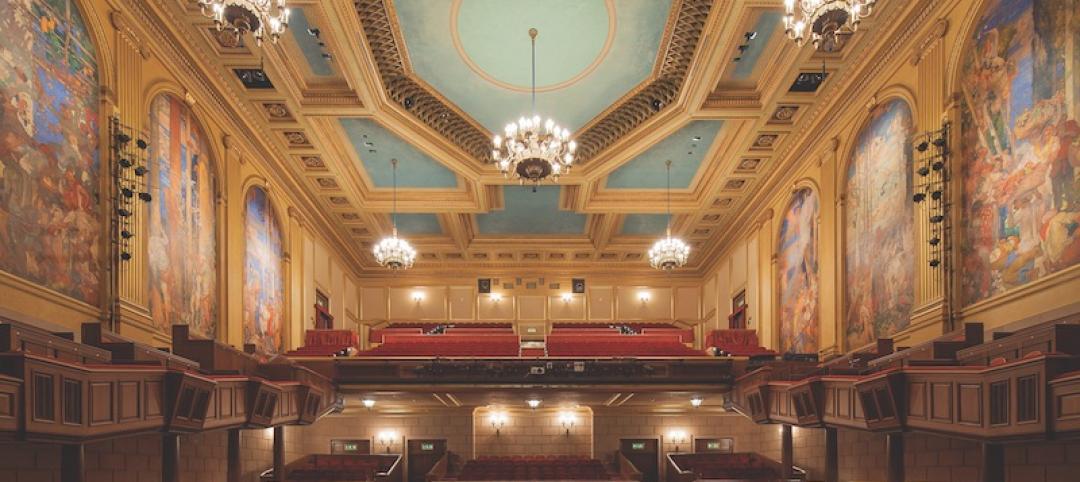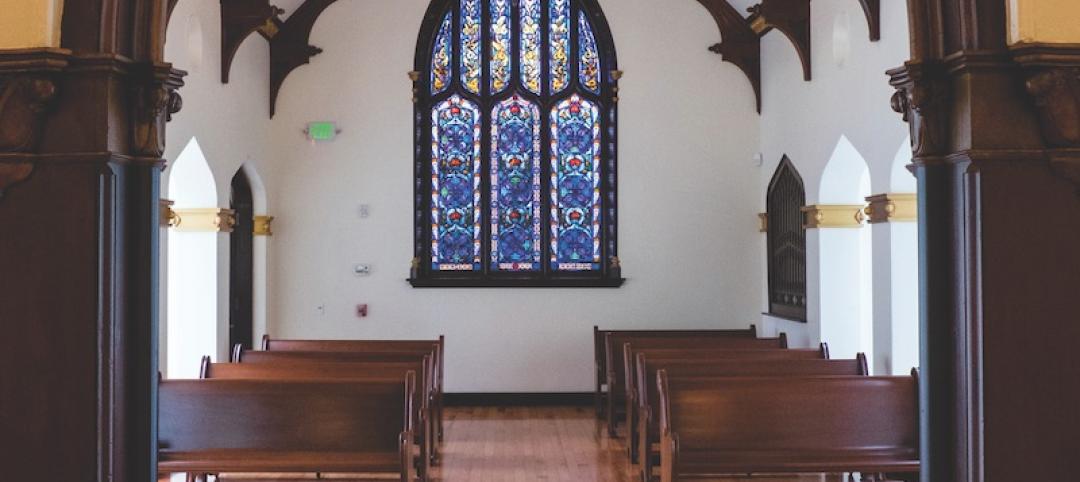When Yale University’s Sterling Library, designed by James Gamble Rogers (Class of 1889), opened in 1931, it was clear that the Collegiate Gothic structure had fulfilled the architect’s vision of a “temple of learning and a cathedral of knowledge.” The quasi-religious experience began right at the main entrance, the 150-foot-long nave, which was embellished with stained glass windows by G. Owen Bonawit, stone carvings by René P. Chambellan, and decorative ironwork by Samuel Yellin.
Four years ago, the university determined that the nave had suffered considerable deterioration and needed to be restored to its original condition. A Building Team led by Turner Construction Company and Helpern Architects was given a strict set of mandates: Make the new nave indistinguishable from the old. Take nothing away from the historic character of the original masonry, metal, finishes, painted surfaces, and stained glass. Improve library operations and update its technology to accommodate Sterling’s physical and digital collections.
SILVER AWARD
Sterling Memorial Library, Yale University New Haven, Conn.
Building Team
Submitting firms: Turner Construction Company (CM); Helpern Architects (architect)
Owner: Yale University
SE: Robert Silman Associates
MEP engineer: AKF Group
Acoustics/AV: Jaffe HoldenGeneral Information
Size: 13,000 sf
Construction cost: $13.5 million
Construction time: June 2013 to August 2014
Delivery method: CM at risk
These tasks were complicated by the further requirement to modernize the nave’s MEP systems—upgrading the lighting to current standards, inserting air-conditioning, concealing the fire alarm system, etc. This had to be accomplished without disturbing the load-bearing stone walls, piers, and columns, which offered no room to incorporate pipes, conduit, and other key infrastructure.
Without any existing cavity wall or chase wall spaces in which to route new mechanical services, the Building Team had to figure out how to jam in critical infrastructure anywhere it could while preserving the existing architectural elements.
Early in the design phase, Turner suggested moving the proposed new mechanical room from its original position in the library stack to unused attic space. The CM hung an aluminum catwalk system from the wood roof framing and created a temporary opening in the stone façade just large enough to fit the air-handling unit. Mechanical piping was installed by opening the roof and craning new risers in from above, the risers running the full length of the shaft.
The last piece of the MEP puzzle had to do with the new fan coil units. Millwork subcontractor CW Keller & Associates created a system of hidden doors within the existing millwork that concealed the fan coil units while maintaining the historic appearance of the card catalog fixtures.
With the MEP matter behind them, the Building Team attacked the remaining problems. Femenella & Associates, working with Helpern Architects, restored the Bonawit stained glass windows. Kugler Ning Lighting Design installed new LED lighting to brighten the interior. The architect reorganized the functions of the three service desks into a single unit, created small meeting spaces in the nave’s north aisle, and reconfigured the circulation desk for easier entry to the stacks.
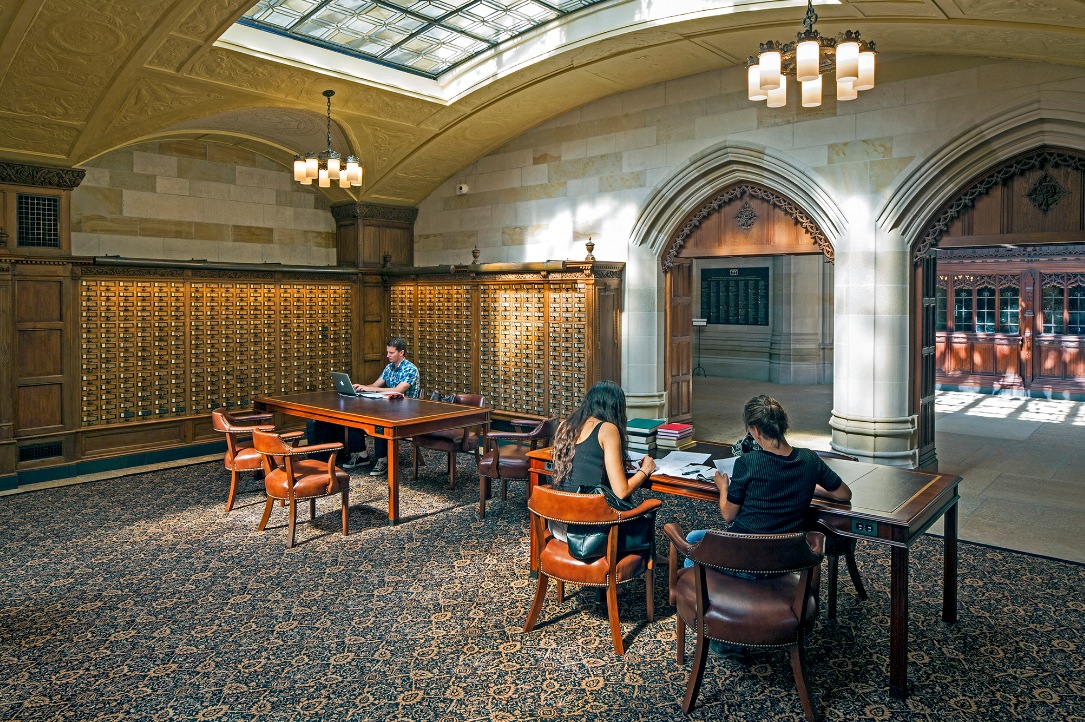 Sterling Memorial Library, originally designed by Yale alumnus James Gamble Rogers, opened in 1931. The Alma Mater mural rises at the end of the 150-foot-long nave (below). Twenty-seven original stained glass windows by G. Owen Bonawit in the nave were restored. Photos: Brian Rose.
Sterling Memorial Library, originally designed by Yale alumnus James Gamble Rogers, opened in 1931. The Alma Mater mural rises at the end of the 150-foot-long nave (below). Twenty-seven original stained glass windows by G. Owen Bonawit in the nave were restored. Photos: Brian Rose.
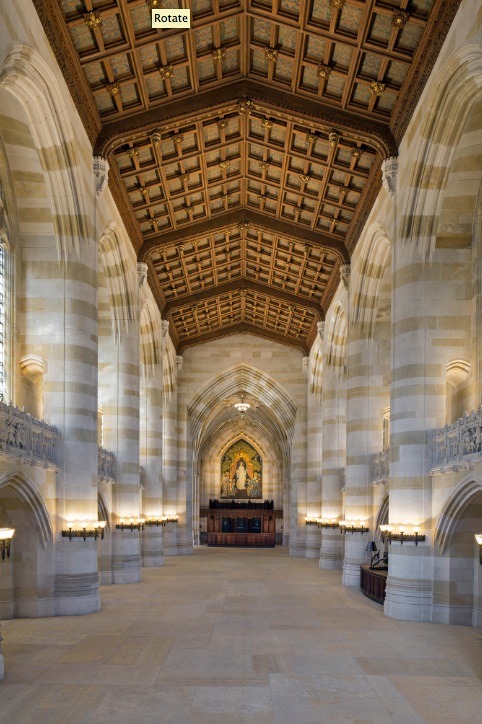
Related Stories
Reconstruction Awards | Nov 13, 2017
Harlem Renaissance: A vacant school provides much-needed housing and a clubhouse for children
Word that PS 186 might be demolished brought out the preservationists, whose letter-writing campaign gained the support of the New York Landmarks Conservancy.
Reconstruction Awards | Nov 16, 2016
BD+C's 2016 Reconstruction Award Winners
St. Patrick’s Cathedral, Lovejoy Wharf, and the Bay Area Metro Center are just a few of the projects recognized as 2016 Reconstruction Award winners.
Reconstruction Awards | Nov 16, 2016
Reconstruction Awards: The Renwick Gallery of The Smithsonian American Art Museum
The renovation restored two long-concealed vaulted ceilings in the second-floor galleries and recreated the original 19th-century window configuration.
Reconstruction Awards | Nov 16, 2016
Reconstruction Awards: Massachusetts Maritime Academy
The two-story “overbuild” employed block and plank construction with drag strut detailing to connect it to the existing building.
Reconstruction Awards | Nov 16, 2016
Reconstruction Awards: The Masonic Temple
The building team suspended a new eighth-floor mezzanine and added 18 9x15-foot windows to the north, south, and west façades.
Reconstruction Awards | Nov 16, 2016
Reconstruction Awards: San Francisco War Memorial Veterans Building
The building team used a system of rocking concrete shear walls, which eliminated the need for deep foundations and reduced the shear force on each wall.
Reconstruction Awards | Nov 16, 2016
Reconstruction Awards: Arc at Old Colony
The Arc at Old Colony's vintage floor plans, voluminous lobby, and myriad elevators were perfect for redevelopment as a historically charming residential building.
Reconstruction Awards | Nov 16, 2016
Reconstruction Awards: Noble Chapel
In May 2013 the 124-year-old Noble Chapel, suffered a three-alarm fire that almost completely destroyed its 1937 crematorium.


